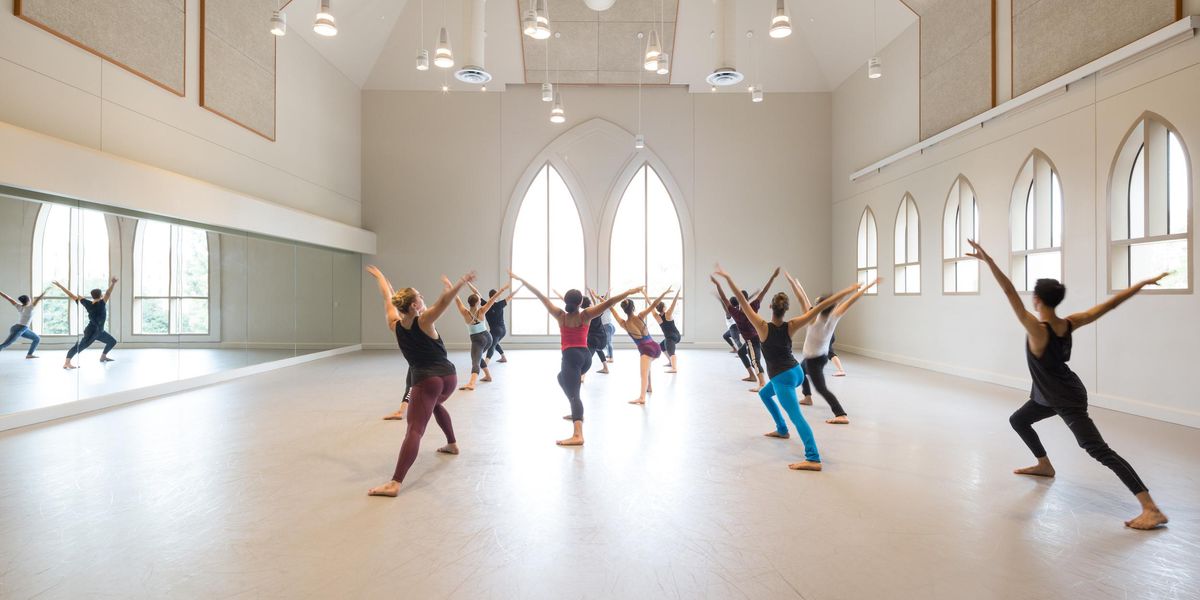Ballet Austin
New American Talent/Dance Choreography Competition
The Long Center
Austin, TX
February 17–19, 2012
Performance reviewed: Feb. 18
Gregory Dolbashian, Loni Landon, and Bradley Shelver, the finalists in Ballet Austin’s fourth biennial New American Talent/Dance choreography competition, each showed a distinct quality of expression that the company dancers seemed to savor. While all of these voices were valuable, jurors Anik Bissonnette, Molly Lynch, and Zachary Whittenburg were tasked with ranking them. They awarded Landon the first prize of $6,000, with Dolbashian and Shelver coming in second and third, winning $5,000 and $4,000, respectively.
Dolbashian’s views that never cease to keep me from myself, a warm, sensual, and intense exploration of physical curiosity, was first on the program. In duets and trios, to ambient electronica and piano, the dancers considered the “what if?” of contact and manipulation. When the cast of three women and two men were onstage together, action and reaction rendered them a collective body. Their pulsing center-stage vignettes were made beautiful by the dancers’ attention to one another. Pedestrian costumes (each choreographer collaborated with Ballet Austin wardrobe master Alexey Korygin) complemented the presiding style: ballet’s open chest and hips plus weightless arms that were always in motion.
Gregory Dolbashian’s
views that never cease to keep me from myself
Landon’s sextet, The Wild Card, had a more feminine, though edgy, quality. To a mixed score of heavy electronic beats and poignant strings, the dancers depicted an individualistic, competitive microcosm with yearning undertones. The women, in severe lingerie-like tops, pulled their legs up beside their heads; the men sliced their arms and legs in front of one another. But at other times the edginess gave way to softness. Landon’s contemporary treatment of the balletic body had the simple reverence of barre exercises: plaintive but scrubbed of affectation. Aloft in an attitude lift, Ashley Lynn Gilfix relaxed her torso’s torque, and her hands seemed gently forgotten; all swan connotations faded away in favor of quiet humanity. As the lights went down, Gilfix slowly lowered herself to sit facing James Fuller, as if they were seeing one another for the first time.
For Shelver’s energetic The Last Just, the torsos of seven male dancers were wrapped in black, leaving their shoulders and arms vulnerably exposed. Under harsh, institutional lighting (Tony Tucci designed lighting for all three works), their upper bodies twisted and jutted while their lower halves maintained a fighting stance. Periodically retreating to the safety of the group, they punctuated a score of driving percussion with screams. Shelver’s program note explained his inspiration, the ancient Talmudic story of the Just Men who carry all of humanity’s burdens; the characters in the piece were painfully aware of their duty.
Bradley Shelver’s
The Last Just
But when the hammering gave way to Fauré and Indonesian chant-songs, the men seemed to find solace in ritual and in each other’s company. As Edward Carr danced restlessly among them, the others stood like candlesticks, arms bent upward, and rocked from side to side as a single, comforting being. Though for me, the stopping, starting, and switching of music near the end became a bit tiresome, Shelver won the audience’s award of $1,000 for each of the three performances, making him the top monetary winner overall.
All photos by Tony Spielberg, courtesy Ballet Austin
Pictured at top: Loni Landon’s
The Wild Card




